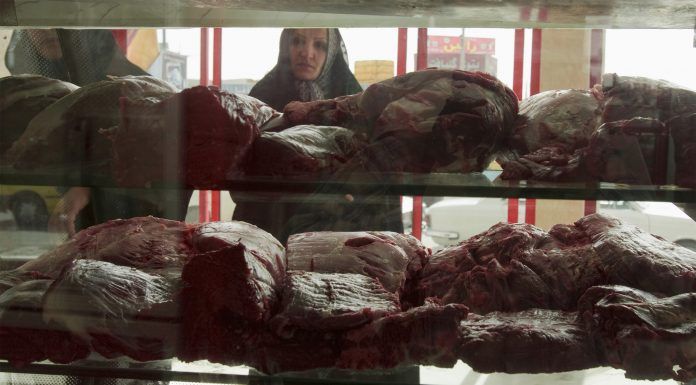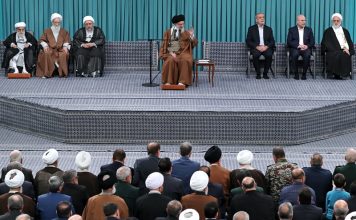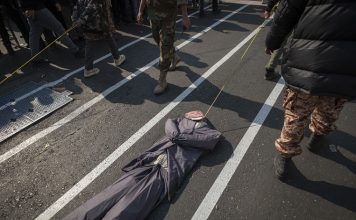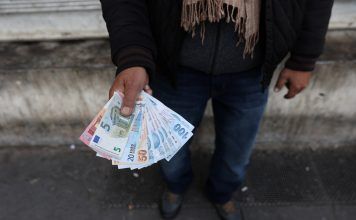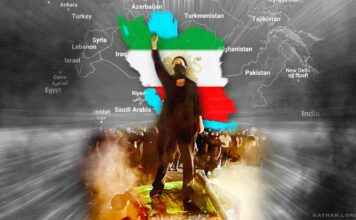By Roshanak Astaraki
The number of people affected by hunger globally has been slowly on the rise since 2014, a recent report by the Food and Agriculture Organization of the United Nations (FAO) has said.
“Projections show that the world is not on track to achieve Zero Hunger by 2030 and, despite some progress, most indicators are also not on track to meet global nutrition targets,” the latest FAO report titled “The State of Food Security and Nutrition in the World (SOFI),” said. “The food security and nutritional status of the most vulnerable population groups are likely to deteriorate further because of the health and socio-economic effects of the COVID-19 pandemic.”
“A preliminary assessment suggests that the COVID-19 pandemic may add between 83 and 132 million people to the total number of undernourished in the world in 2020, depending on the economic growth scenario.” The report warned.
In January, the FAO Food Price Index showed the eighth consecutive monthly increase in prices of grains, sugar, cereals, vegetable oils, sub-indices, meat, and dairy.
In Iran, food prices have been rising steadily since the outbreak of the coronavirus last year.
In its recent report, the Statistics Center of Iran, a government agency, said that food prices had increased by 59.9 percent between January and December 2020. The price of all food products has gone up by 2 percent since January this year, which shows a significant increase compared to the global average.
Prices of agricultural and livestock products are often at the top of the food inflation table. This upward trend existed before the outbreak of the coronavirus pandemic in Iran.
Some blame former president Mahmoud Ahmadinejad, who was in office from 2005 to 2013, and his administration’s failed policies for Iran’s agricultural crisis.
[aesop_image img=”https://kayhanlife.com/wp-content/uploads/2019/09/2001-07-23T120000Z_1570642602_PBEAHUKZHDS_RTRMADP_3_IRAN.jpg” panorama=”off” credit=”A drought-stricken Iranian farmer separate barley from straw. Reuters./ FILE PHOTO” align=”center” lightbox=”on” captionsrc=”custom” captionposition=”left” revealfx=”off” overlay_revealfx=”off”]
After signing the 2015 Joint Comprehensive Plan of Action (JCPOA), better known as the Iran nuclear deal, which provided some sanctions relief for Iran, President Hassan Rouhani’s “Hope and Wisdom” administration promised to solve the country’s economic crisis in 100 days. Unfortunately, since taking office in 2013, Mr. Rouhani and his government have failed to deliver on that promise.
The price of meat and poultry in Iran has risen, respectively, by 250 percent and 400 percent since 2013. The price of one kilogram of sugar and split pea have, respectively, gone up by 359 percent and 373 percent in the past eight years. The price of rice, an Iranian staple food, has increased by 150 percent in the past year alone.
After tea, coffee, soft drinks, and fruit juices, bread and cereal prices have experienced the highest annual inflation rates. Prices of dairy products have gone up fivefold in the past eight years.
High prices have caused a sharp drop in demand for some food products.
Ghasemali Hassani, the president of the Food Bankers Union, recently said that demand for some food products had fallen by 50 percent compared to six months ago because of high prices.
Experts have been warning for years that the agriculture industry’s chronic problems would cause severe food insecurity in Iran.
An agricultural expert at the Phoenix Project of Iran (PPI), a U.S.-based non-profit scientific organization, told Kayhan Life: “Lack of a robust leadership in all industries in the country, particularly in the agriculture sector, has caused severe problems in farming production and management. Misuse of water resources in agricultural lands (i.e., wasteful exploitation), have disrupted the production cycle and permanently damaged farms.”
Asked about the scale and extent of climate change and related factors on agricultural production and the government’s efforts to mitigate these events, the expert explained: “There have been many reports about the severe effects of climate change on the agriculture sector in Iran, but the absence of a comprehensive policy, failure to adopt a scientific approach, lack of effective planning, and misuse of country’s natural resources for financial gain have been the main reasons for the current agricultural crisis. Diverting water from Zayandehrood [largest river in the Iranian Plateau] to areas such as Qom [140 kilometers south of Tehran] is an excellent example of such harmful practices.”
“This means that the contribution of climate change in creating harmful effects on the environment and the agriculture sector is minimal compared to the pervasive poor management of the country’s natural resources and lack of a scientific and effective approach based on the principles of sustainable production in the agricultural sector, as outlined by the FAO,” the expert noted.
Influential criminal groups with close links to specific state power centers, which have exploited the country’s natural resources for financial gain, pose a more significant threat to agricultural lands, pastures, and lowlands than climate change. Iran’s Land Affair Organization recorded 44,289 incidents of illegal land exploitation, covering a total area of 3,067 hectares in 2019. According to the Majlis (Iranian Parliament) Research Center, deforestation reduced the country’s woodlands from18.3 million hectares three decades ago to about 12.4 million hectares today.
A recent report by the Forest Range, Watershed Management Organization of Iran said that 12,000 hectares of forests had been destroyed annually between 2015 and 2020. The soil erosion in Iran measures16.7 tons per hectare, which is four times the global average.
Meanwhile, many farmers, gardeners, landscapers, and ranchers believe that low-quality and expensive agricultural seeds and livestock feeds are the principal problems in production. The country will most likely see the price of urea fertilizer increase from 500 percent to 700 percent.
The price of imported livestock feed has risen five to six times in the open market in recent months. The official government prices for the same products have gone up by 55 percent.
A salmon farmer told Kayhan Life: “We have seen a marked decline in the quality of fish feed, a significant portion of which is imported. As a result, many fish farmers in the northwest region of the country have lost thousands of dollars.”
Many poultry and fish production units have gone bankrupt in the last two years. Poultry and egg prices have risen in recent months.
The same agricultural expert from the Phoenix Project of Iran told Kayhan Life: “Agriculture industry relies on high-quality fertilizers and pesticides. Substandard and contaminated pesticides and chemical fertilizers affect smallholders and farmers’ ability to produce and compete in the domestic markets, resulting in heavy reliance on imports. It also reduces the quality and marketability of domestic products.”
Ineffective management has caused a significant drop in value-added agriculture in Iran. Value-added agriculture focuses on production or manufacturing processes, marketing, or services that increase the value of primary agricultural commodities by increasing appeal to the consumer and the consumer’s willingness to pay a premium over similar but undifferentiated products.
Value-added agriculture in Iran has contracted by one-tenth of a percent this year. The country invested $900 million in the agriculture sector in 2019, which was less than half of its spending in 2010.
Meanwhile, the government has not earmarked a separate fund for the agriculture sector in its annual budget bill in the past few years to the detriment of agricultural production.
The government’s 2021-22 Budget Bill allocates only 22.3 percent of the money earmarked to develop the “Capital Assets Acquisition in Agriculture and Natural Resources Plan,” which means close to 80 percent of the funds that should have been given to the agriculture industry has been withheld or spent in other areas.
The high production cost and lack of government support have forced many farmers to close their operations and seek employment in other fields.
Data published in the spring of 2020 showed the cost of deep plowing and field leveling, and Disc farming of one hectare of irrigated land using a tractor had doubled compared to the previous year. On average, a male seasonal fruit picker was paid twice what a farmhand harvesting grain earned.
Farmers, especially those living in drought-stricken provinces, have migrated to cities in recent years. Many of them live on the outskirts of cities and try to live as day laborers or street vendors.
The agricultural expert from the “Phoenix Project of Iran” said: “The trend will undoubtedly inflict irreparable damage to Iran’s farming industry. For example, during President Rouhani’s 11th and 12th governments, Iran has lost its place as the largest global producer of the highest quality saffron, pistachios, dates, and pomegranate. Despite the severity and extent of these problems, effective management can reverse most of these harmful trends.”
“However, if no immediate action is taken to address the problems, the Iranian farming industry will be all but destroyed, and the country will have to import all its agricultural products,” the expert warned.
This article was translated and adapted from Persian by Fardine Hamidi


